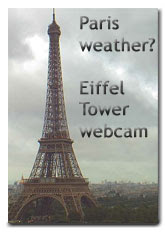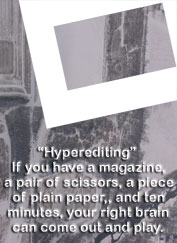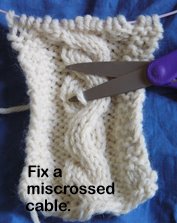.
Heffalumpen!
The National Zoo has several Asian elephants (five, I think). They have a fairly big area (for a downtown zoo). They can choose to be together or separate, and can choose different things to do. Someone has made a puddle for them, so there is mud. They like to throw mud, dirt, hay, etc., on their backs. It's like sunscreen, and also keeps bugs from biting them.
My best shot of a panda on July 20. This is with the camera's 6x zoom maxed out. Still exciting to those of us who hardly ever get to see a panda.
A closer crop......
I also saw a panda which was asleep, from closer up, but did not take pics.
The zoo has several large sculptures of marine creatures, made of plastic we humans allowed to contaminate our oceans.
Shame on us, blythely strewing trash and garbage everywhere we go. :-(
I always pick up trash when I go to the beach. I usually take plastic shopping bags, and fill them up and dump the trash in an appropriate receptacle. Even in the few minutes we spent at the beach on our way to Iowa, earlier in July, I picked up trash. No sea creature is going to suffer because of plastic in the water if I can help it.
Closeup of the penguin's chest. Whose toothbrush is that, and how did it get into the ocean?????
[walking away; shaking head]
Red-brick architecture, with hexagonal or octagonal towers and white arches, makes me think of Ravenna, Italy (which I have never visited, but have seen in art history classes).
This is the reptile house.
Here are some closer looks at the white arch we can see in the image above.
The arch itself is very fancy, in contrast to the relative plainness of the brick. Stegosaurus -- my favorite dino.
Some details of the image above.
The stuff in the previous image is on top of the column at the front of the arch, and the tortoise below is holding up that column.
I went into the reptile house, but it was crowded and noisy, as well as hot and humid. I took exactly one pic, of this flower-spotted lizard.
I didn't notice until I got this on "the big screen" that there is
someone much larger in this small space. Surely it's not someone who
would prey on this one..........
Here's a closeup of the flowery spots.
The National Zoo has a system of towers and cables providing an overhead path for orangutans to move from one building to another, if they choose to do that. There is no safety net; falling must not be an issue.
This is the tower at the Think Tank end of the cables-and-towers.
Orangutans are the only cousins I've seen who like to drape themselves in cloth (or whatever it is this one is wearing).
Closer crop -- we are looking at a right side. Back at left, right knee pointing at us, right hand around the outside of the tower.
Lion.
Prairie dog.
Pelican! I think this is the first time I've ever seen a pelican in a zoo, and I'm sure it's the closest I've ever been to a pelican.
Isn't this a cool view -- both above and below the water? So many interesting details. The hook at the end of the beak. The way we can see the texture of its feathers. (The "hair" sticking backwards from its neck....) Getting to see the feet, and how they are folded up as the foot moves forward through the water, and spread out as it propels the bird forward......
The pelican was in the sea lion enclosure. These sea lions must not be interested in pelican for lunch.
I saw some sea lions working for their meal -- behaving as the keepers asked them to, and receiving fish in return.
I think this is only the second time I've ever seen a beaver in a zoo. I wonder why..... They are so interesting, and so critical to the health of our environment. (There is an excellent program on PBS about beavers and what they can do for the environment, if allowed. Their impact on dry places is enormously positive............)
New-to-me plant. It was abuzz with bees.
Przewalski's horse. Doesn't she look nice? Shiny, and, to my uneducated eye, in very good condition. This is the only pre-domestication horse that we still have, and there are not very many of them left.
There was information by this enclosure about how the population of Przewalski's
horses in captivity is aging, but they want to breed them to retain as
much genetic diversity as possible. They are using artificial
conception techniques (developed for race horses) to try to get as many
babies with as much genetic diversity as possible. They have Przewalski's horses in Denver. I saw a baby there last November. Hooray!
I hope we can make room on our beautiful planet for truly wild horses to be truly wild again.
As I stood taking pics of the pretty girl above, some guy with a British accent was behind me, talking about the Queen. I first heard him say that some friend of his had rescued and trained two horses, and then the Queen bought the horses "for 10,000 pounds." He said it was a big secret who was buying the horses. But "when the van showed up to collect them, it had the royal crest on it." Then the guy said the Queen is very up-to-date -- she puts her own choice of music on her phone so she can listen to it when she pleases. I don't know if any of it was true, but I hope the Queen knowingly buys rescued horses, and I hope she puts her own music on her phone. :-) (Editorial note -- I cannot believe anyone involved in rescue would sell
animals to an
unknown party, 10,000 pounds or no 10,000 pounds! !!! Rescuers want to have a darn good idea who is taking animals they have saved and rehabilitated!)
One last critter. Life-size triceratops. I guess this was the star of a movie, at some point, and somehow ended up at the zoo. It is very big. Its back is taller than a tall man. I like the way put plants with big leaves around it.
If I had millions and billions of dollars, and a huge amount of
property, I might like to have life-size triceratopses. Or
stegasauruses. Or, better yet, I should give the money I'd have spent
on huge properties, and dino sculptures, to elephant and rhino rescue, to buy land where living giants can
walk in safety.
Later; after supper. Enjoying my sky view from the hotel room.
.
Subscribe to:
Post Comments (Atom)











































No comments:
Post a Comment